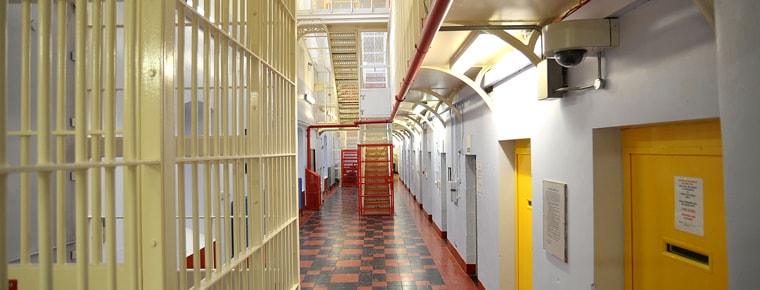
Male-bodied transgender inmate housed with women
Criminal defence lawyer Robert Purcell says that the Gender Recognition Act 2015 has placed the State in an impossible position with regard to transgender prisoners.
The law is challenging for the courts and the Irish Prison Service, he believes, since there is, potentially, a safety issue for women inmates housed alongside a male-bodied prisoner.
Currently, a pre-operative, pre-hormone therapy, male-to-female transgender prisoner is being held in Limerick women’s prison.
This is understood to be the first time that an inmate, registered as male at birth, has been housed in a women’s prison in Ireland.
When before the court last July, the prisoner was in possession of a gender recognition certificate.
High level of monitoring
It is understood that the prisoner was assigned a high level of monitoring after being convicted of ten counts of sexual assault and one count of cruelty against a child.
The prisoner is accompanied by two officers at all times while in the common areas of the detention facility.
“The Irish Prison Service must accept all prisoners into custody, into whatever prison that a judge orders,” Minister Charlie Flanagan said in response to a parliamentary question from Aontú TD Peadar Tóibín, on 12 September.
Robert Purcell is chair of the Law Society Criminal Law Committee: “The law that was enacted in 2015 did not envisage this situation, and it puts the Prison Service and the courts in a difficult position because, obviously, if somebody is self-declaring that they have to be recognised, then they have to be dealt with on that basis, even though physically, they have not have made the [physical] transformation.
Problems
“I don’t think the legislation envisaged the ability of transgender people to be able to self-declare; and it didn’t foresee the problems it would cause if a transgender, self-declared person was held in a mixed prison,” he said.
The court has to recognise the lawfulness of that law, and act on it, and that’s what the judge was doing, Purcell said.
He commented that the judge may have made the decision that the person was a woman, on the basis that the person had self-declared under the act. The judge then had to accept that he or she was sentencing a female. The Prison Service must then commit the prisoner to an appropriate prison, Purcell said.
Individual monitoring
He pointed out that one option would be for the prison accommodation to be adjusted in terms of a wing to house transgender prisoners.
He said that the cost of individual security monitoring of prisoners already involved a financial outlay, in terms of dealing with gang loyalties. The Prison Service is likely to be monitoring the situation on a daily basis, he said.
An IPS spokesman said that he couldn’t comment on individual prisoners or cases.
“The Irish Prison Service must accept all prisoners into custody into whatever prison a judge orders under the Consolidated Committal Order, which was signed by the Minister for Justice and Equality in 2015,” the IPS spokesman said.
Prisoner assessment
“Upon committal, all prisoners are brought to the reception/committal unit of the prison, where there is an opportunity to provide personal and physical details as part of the regular committal interview process.
“The assessment of the prisoner’s needs, may require the Prison Governor to consider the biological gender, legal gender, gender identity, transgender, gender expression, sexual orientation or gender recognition legislation.
“In such cases, the governor may make a recommendation on the appropriate placement within the prison system, taking into consideration good order, security and operational issues, protection issues, available accommodation, and the healthcare needs of the prisoner.”
Complex situation
Fíona Ní Chinnéide of the Irish Penal Reform Trust (IPRT) said: “This is a really complex situation for the prison service to manage.
“There are safety concerns, whether the transgender person is accommodated in a male prison or a female prison.
“However, as a situation that arises very infrequently, it is appropriate both that a policy is in place, and that the IPS manages it on a case-by-case basis.”
Prisoner safety
She said that many women in prison had prior experience of violence and abuse, including sexual, emotional and domestic abuse.
If a prisoner had a history of gender-based violence against women, then this would need to be taken into account in decision-making about placement and regimes, she said.
“It is also important to highlight what makes prisons safer. Prison safety is improved through reduction in overcrowding, provision of single-cell accommodation, access to mental and physical healthcare, and meaningful structured activities, such as education, training and work.
“Safety in prisons is undermined on the other hand by overcrowding, doubling-up in cells, long lock-up times, and lack of mental healthcare.”
She continued: “The Irish Prison Service cannot transfer anyone between a male and a female prison; they can only transfer within the female prison estate, or within the male prison estate.
Isolation
“There are complex challenges in the accommodation of any minority in what is a small prison system. The creation of specific facilities for transgender prisoners in Ireland would be largely impractical, and risk individuals being held in isolation.
“Solitary confinement and isolation can have severe and lasting psychological effects, and must be avoided for all prisoners. Assigning additional staff to ensure the safety of a prisoner is preferable to detaining anyone on their own.
“There is a higher prevalence of mental-health issues, addictions, and experience of marginalisation, abuse and trauma among transgender people.
Extra measures
“They are more vulnerable to being victims of violence, both in the community and in prison. Therefore, extra measures need to be taken to ensure their physical and psychological safety.
“Measures that should be taken include: accommodation in a single-cell, access to appropriate health care equivalent to that provided in the community, and body searches which are conducted in accordance with the expressed gender of the transgender prisoner.”
The Irish Human Rights and Equality Commission had no comment on the matter.